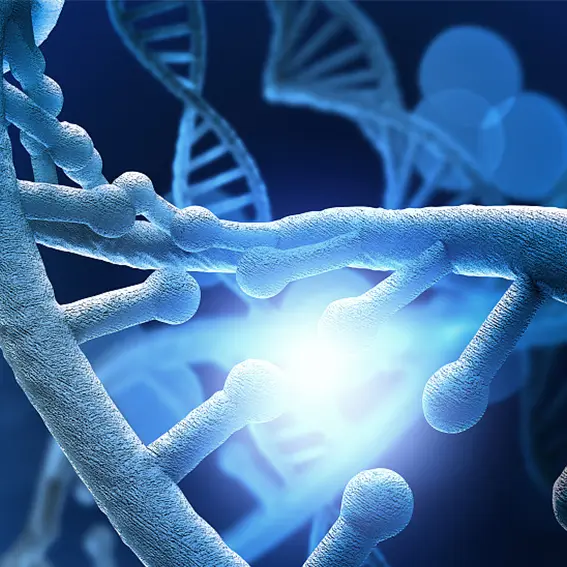1 | Why a Protein Biology Lab Still Matters
From deciphering enzyme kinetics to mapping interactomes, a dedicated protein laboratory supplies the reagents, instruments, and validated workflows that turn cell lysates into high-confidence structural and functional data. Properly organized space, coupled with transparent quality metrics, delivers reproducible insights that power everything from synthetic-enzyme design to large-scale proteome surveys.
2 | Facility Layout & Biosafety
- Zoned workflow. Separate pre-analytical benches (cell harvest, lysis) from post-purification areas (chromatography, mass spectrometry) to prevent cross-contamination.
- Ventilation & chemical safety. Fume hoods handle volatile buffers (e.g., β-mercaptoethanol), while BSL-2 biosafety cabinets protect analysts from recombinant vectors under the latest NIH Guidelines.
- Access control. Key-card doors and audit trails maintain chain-of-custody for high-value constructs and standards.
3 | Sample Preparation Workflows
- Gentle lysis with non-ionic detergents preserves quaternary structure for downstream binding assays —see University of Michigan’s protocol library.
- Protease/phosphatase inhibitors are added fresh at 1× working concentrations to limit post-lysis modifications.
- Clarification & concentration via low-speed centrifugation (<15 000 × g) and 10 kDa spin filters ensure column longevity.
4 | Protein Quantification
| Assay | Linear Range | Key Reference |
|---|---|---|
| Bradford | 0.1–1.5 mg mL⁻¹ | Harvard Medical School protocol. |
| BCA | 5–1 000 µg mL⁻¹ | NIST low-volume workflow. |
| UV 280 nm | >50 µg mL⁻¹ | NIST SRM 927f certificate. |
Duplicate readings and an internal bovine serum albumin (BSA) control keep inter-plate CV ≤ 5 %.
5 | Purification Strategies
- Affinity chromatography (e.g., His-tag, GST-tag) captures >90 % of target in one step when supported by nested-primer construct design rules.
- Ion-exchange & size-exclusion polish preparations to >95 % purity; new mixed-mode resins documented by NIH authors improve recovery of acidic proteins.
- Endotoxin removal columns (polymyxin-B) keep bacterial lysate contaminants below 0.1 EU mL⁻¹—critical for cell-free assays without invoking therapeutic claims.
6 | Structural & Functional Characterization
| Technique | Typical Output | |
|---|---|---|
| SDS-PAGE & Western blot | MW & epitope confirmation | |
| LC-MS/MS | Peptide-level ID & PTM mapping | |
| Surface plasmon resonance (SPR) | kᴅ, kₒₙ, kₒff | |
| Circular dichroism (CD) | Secondary-structure content |
Strict calibration against molecular-weight ladders (SDS-PAGE) and peptide standards (MS) caps technical variance below 10 %.
7 | Quality Assurance / Quality Control (QA/QC)
- Run-level controls. Include a frozen aliquot of a well-characterized standard (e.g., NIST RM 8671) on every gel and MS batch.
- Analytical drift tracking. Plot control-sample MW shift and MS peptide # monthly; investigate excursions >2 SD. Lessons from common electrophoresis artifacts are documented in NIH reviews.
- Documentation. Chromatogram PDFs, raw MS files (.mzML), and blot images are archived under read-only permissions for ≥10 years.
8 | Data Stewardship & FAIR Compliance
Submitting datasets to ProteomeXchange (PRIDE, MassIVE) with MIAPE-compliant metadata makes results findable and reusable, while aligning with the FAIR Principles and recent U.S. National Academies workshops on data sharing.
9 | Automation & High-Throughput Scaling
Robotic liquid handlers, 24-column FPLC skids, and parallel 96-well filtration plates increase daily throughput from ~10 to >200 prep-validate cycles without additional staff. Studies show automated Western blot platforms slash hands-on time by 60 % while maintaining blot sensitivity.
10 | Training & Continuous Improvement
- Competency checks. Annual proficiency panels covering lysis, quantification, and blot interpretation maintain analyst concordance ≥90 %.
- Micro-learning modules. University-hosted webinars (e.g., Davidson College, University of Florida) refresh best practices for dye-binding assays and microplate layouts.
- Change control. Any buffer-recipe tweak triggers a miniature Design-of-Experiments (DoE) ensuring yield and purity stay within control limits.
A state-of-the-art Protein Biology Laboratory fuses evidence-based facility design, validated purification pipelines, and rigorous data stewardship. By embracing risk-based biosafety, sharing full QC datasets, and automating repetitive steps, labs deliver high-confidence protein data at scale—fueling discovery while safeguarding reproducibility, transparency, and community trust.
